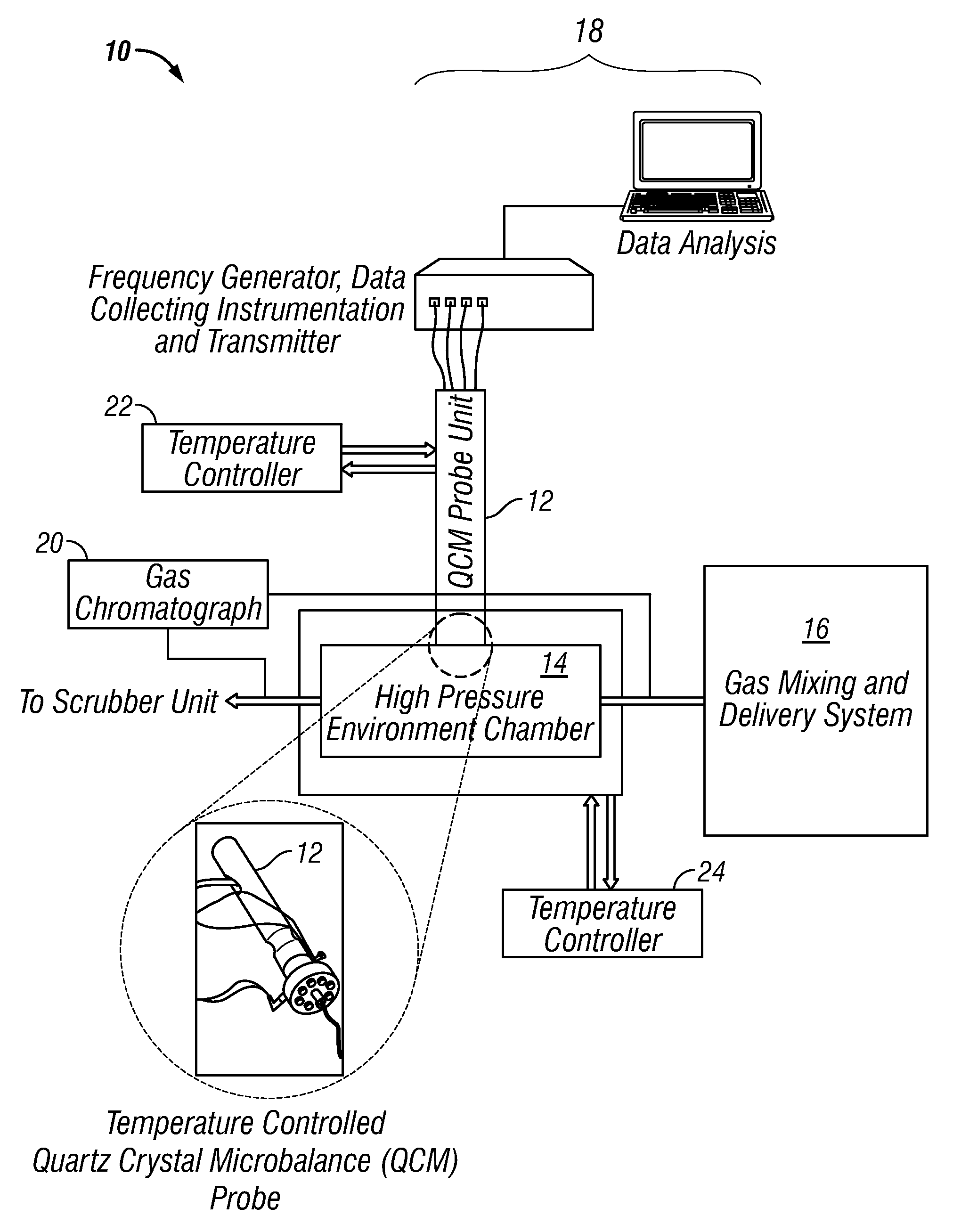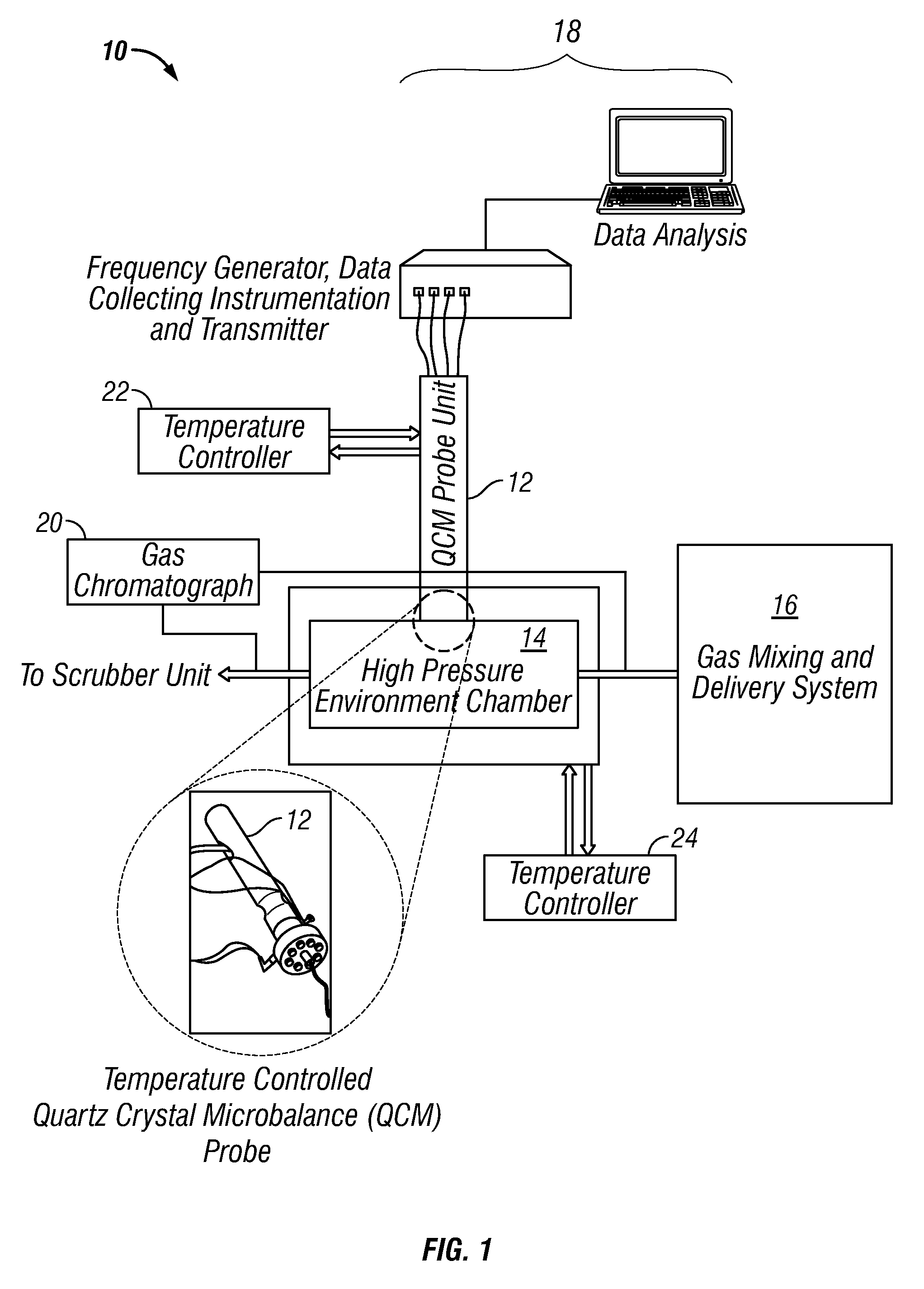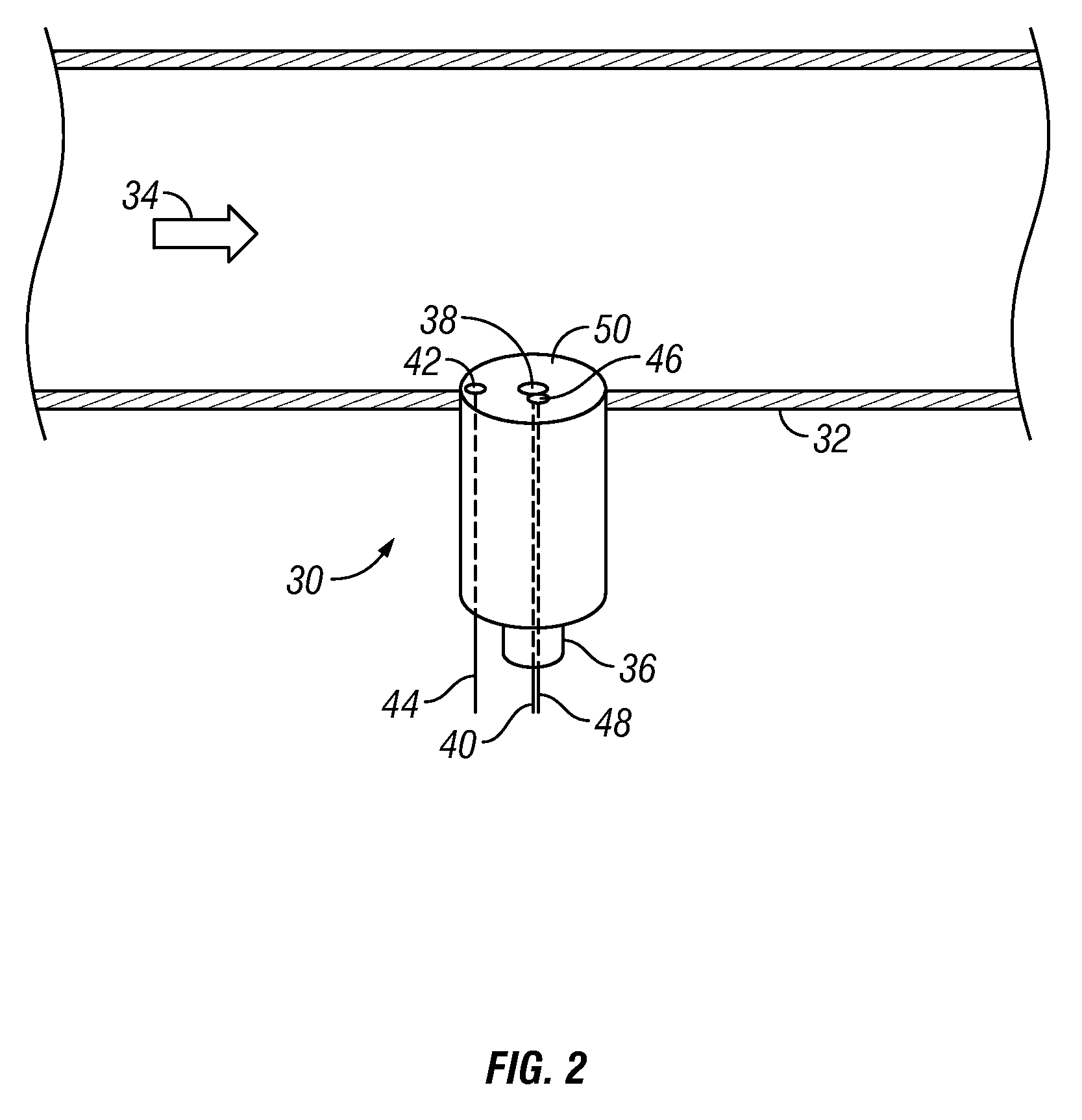Methods and Apparatus for Monitoring Deposit Formation in Gas Systems
a gas system and deposit technology, applied in the direction of instruments, weighing by removing components, material moisture content, etc., can solve the problems of clogging of instruments and valves, affecting the efficiency of compressors, and affecting the operation of compressors
- Summary
- Abstract
- Description
- Claims
- Application Information
AI Technical Summary
Benefits of technology
Problems solved by technology
Method used
Image
Examples
example 1
[0043]A QCM probe coated with thin film of iron would be placed in a temperature-controlled high pressure gas chamber and maintained at a constant temperature (which would be lower than temperature of the gas chamber) for induced water condensation (condensation cycle). The condensed water would result in an increase in weight of the QCM probe. The condensed water on the iron-coated QCM probe with absorbed gases (CO2, H2S, O2) would cause the iron to corrode leading to further weight gain of the QCM. After subsequent increase in temperature of the QCM probe the water layer would evaporate (evaporation cycle) resulting in a net weight gain due to black powder formed during the condensation cycle. In these experiments, the temperature of the gas chamber would be varied between 5 and 50° C. while pressure would be maintained between 15 and 1000 psi (0.1 to 6.9 MPa). The temperature differential between the QCM and the gas chamber would be in the range from 0 to 50° C.
[0044]Many modific...
PUM
 Login to View More
Login to View More Abstract
Description
Claims
Application Information
 Login to View More
Login to View More - R&D
- Intellectual Property
- Life Sciences
- Materials
- Tech Scout
- Unparalleled Data Quality
- Higher Quality Content
- 60% Fewer Hallucinations
Browse by: Latest US Patents, China's latest patents, Technical Efficacy Thesaurus, Application Domain, Technology Topic, Popular Technical Reports.
© 2025 PatSnap. All rights reserved.Legal|Privacy policy|Modern Slavery Act Transparency Statement|Sitemap|About US| Contact US: help@patsnap.com



